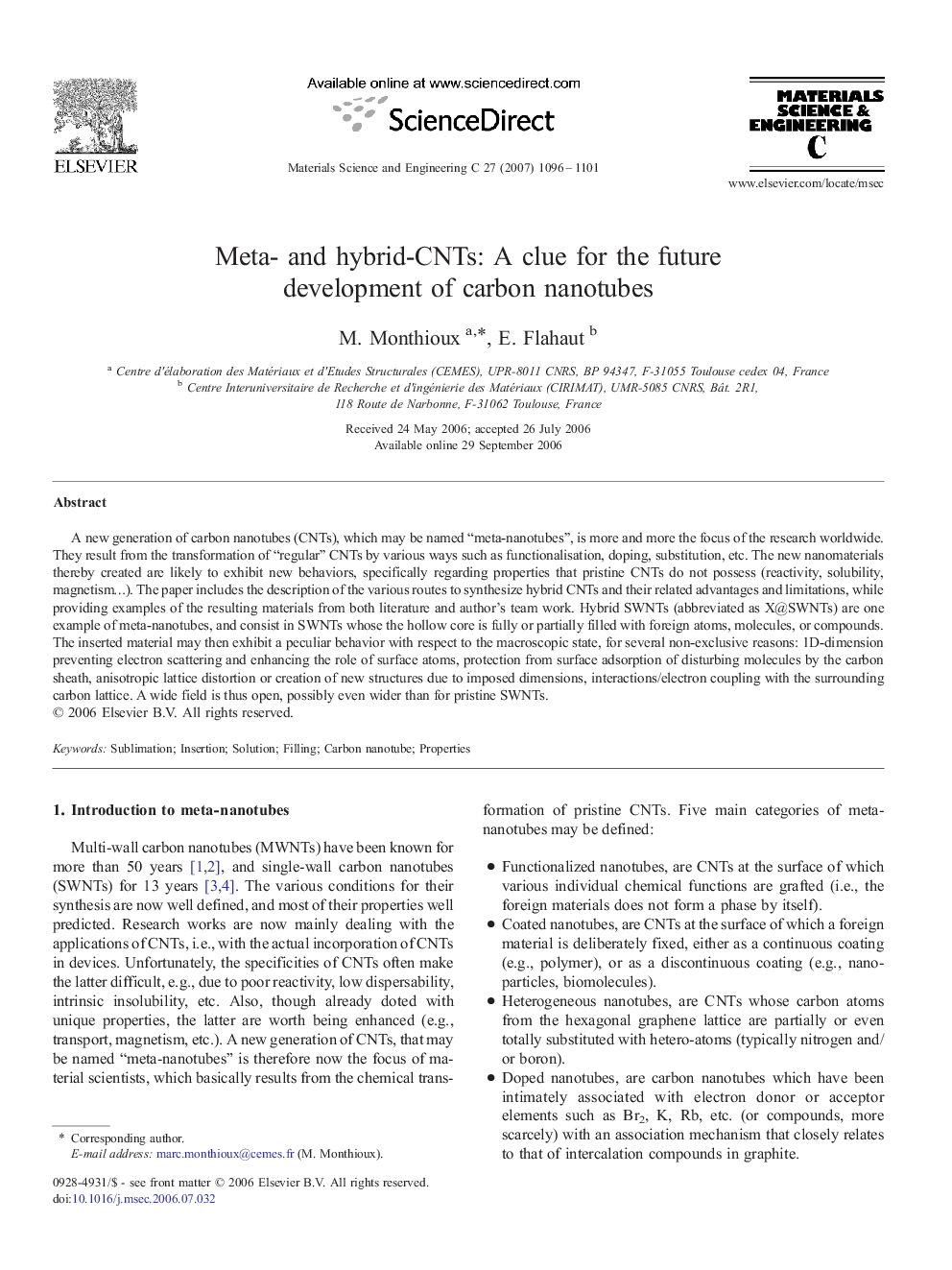| Article ID | Journal | Published Year | Pages | File Type |
|---|---|---|---|---|
| 7870746 | Materials Science and Engineering: C | 2007 | 6 Pages |
Abstract
A new generation of carbon nanotubes (CNTs), which may be named “meta-nanotubes”, is more and more the focus of the research worldwide. They result from the transformation of “regular” CNTs by various ways such as functionalisation, doping, substitution, etc. The new nanomaterials thereby created are likely to exhibit new behaviors, specifically regarding properties that pristine CNTs do not possess (reactivity, solubility, magnetismâ¦). The paper includes the description of the various routes to synthesize hybrid CNTs and their related advantages and limitations, while providing examples of the resulting materials from both literature and author's team work. Hybrid SWNTs (abbreviated as X@SWNTs) are one example of meta-nanotubes, and consist in SWNTs whose the hollow core is fully or partially filled with foreign atoms, molecules, or compounds. The inserted material may then exhibit a peculiar behavior with respect to the macroscopic state, for several non-exclusive reasons: 1D-dimension preventing electron scattering and enhancing the role of surface atoms, protection from surface adsorption of disturbing molecules by the carbon sheath, anisotropic lattice distortion or creation of new structures due to imposed dimensions, interactions/electron coupling with the surrounding carbon lattice. A wide field is thus open, possibly even wider than for pristine SWNTs.
Related Topics
Physical Sciences and Engineering
Materials Science
Biomaterials
Authors
M. Monthioux, E. Flahaut,
